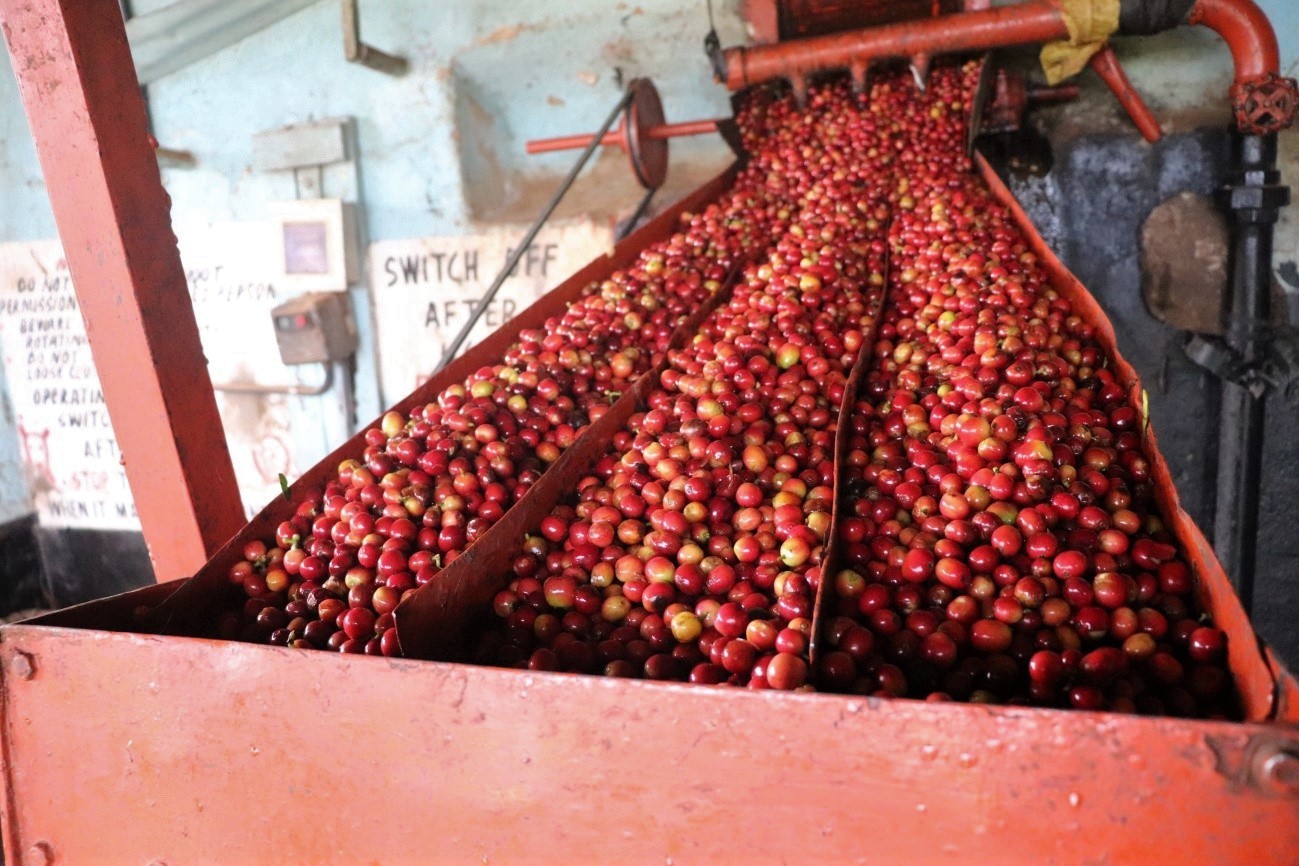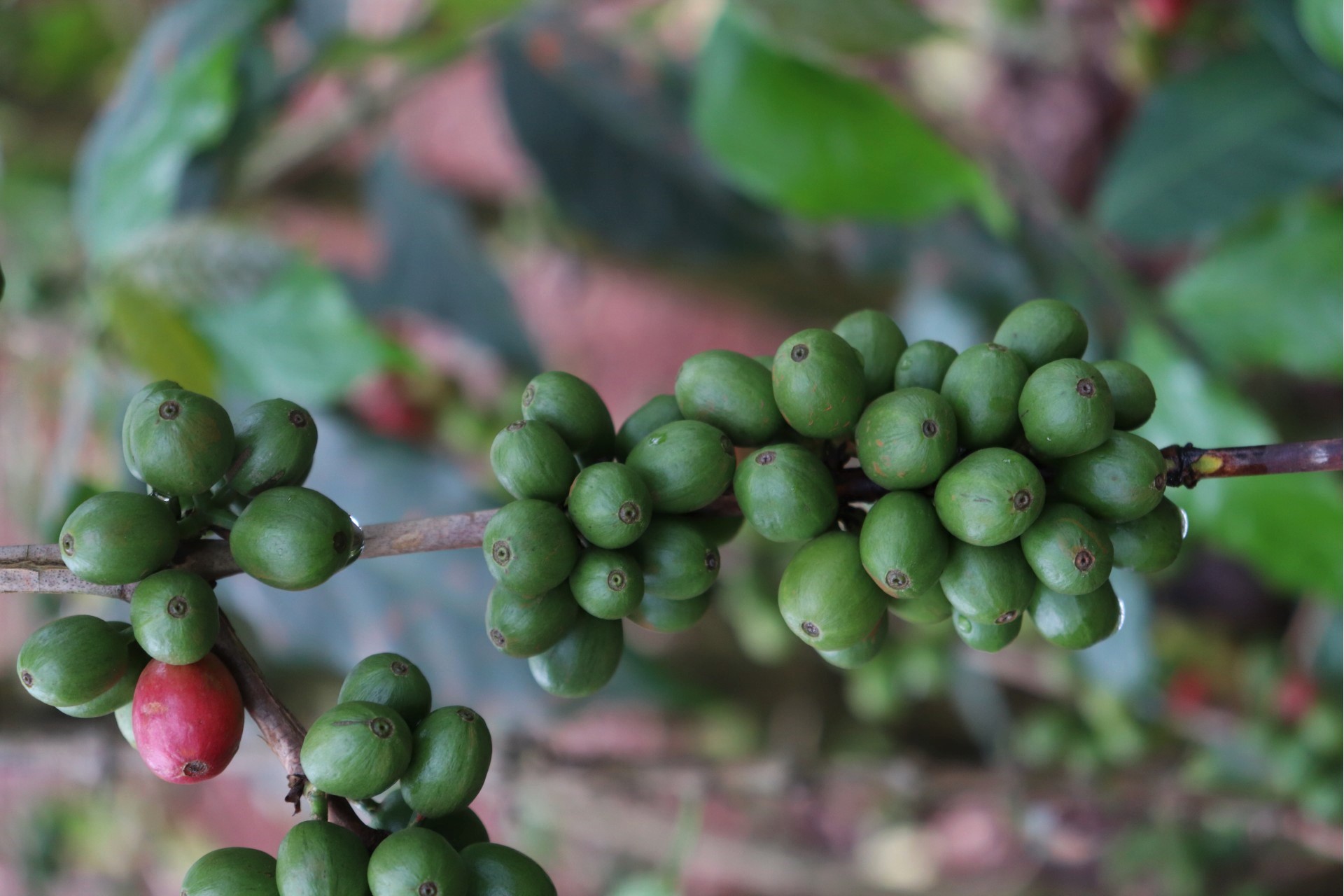Kenya Machakos Kaliluni AB – 47KF0032 *51639* – 25563 – GrainPro Bags – SPOT RCWHSE
Position Spot
Bags 0
Warehouses Oakland
Flavor Profile Orange, caramel, baker's chocolate, juicy
Please Note This coffee landed more than 8 months ago.
Out of stock
About this coffee
Grower
1659 smallholder farmers organized around Kaliluni factory
Altitude
1700 - 1900 masl
Variety
SL-28, SL-34, Ruiru 11, Batian
Soil
Volcanic loam
Region
Machakos County, Kenya
Process
Fully washed and dried in raised beds
Harvest
May - June
Certification
Conventional
Coffee Background
Machakos county is one of central Kenya’s largest, beginning south of Nairboi and spanning northeast along the borders of Kiambu, Muranga’a, and Embu counties, some of Kenya’s oldest coffee producing areas. Machakos is lesser-known than the highly competitive central counties of Kiambu, Kirinyaga, and Nyeri, and while it is commonly known as “Eastern” Kenya, it nonetheless is capable of producing excellent quality coffees, as it contains similar latitudes and elevations to the rest of the central area. Notably, Machakos produces a fly crop as well, so fresh crop coffee in the early fall is possible here.
Kaliluni Factory is the sole washing station in the Kaliluni Farmer Cooperative Society (FCS). The producer group belongs to the Machakos Cooperative Union, an umbrella organization that represents 28 societies in the county and offers benefits to its member commonly provided by 3rd party service providers elsewhere in Kenya, including dry milling, farmer training, marketing, and subsidized farm inputs like pesticides, fertilizer, and fungicides. Kaliluni is outside Kaliluni town, in the lower Machakos highlands.
“47KF0032” in the title refers to this coffee’s “outturn” number. Outturn numbers are unique microlot codes that are given to each and every batch of parchment delivered to dry mills from individual factories or estates anywhere in Kenya, and are the units on which Kenya’s entire microlot export system is built. Outturns in Kenya are tracked with a shorthand code that places the specific batch of parchment coffee in time, place, and sequentially with other coffees. Outturns are stylized as an 8 or 9-character code, including a 2-digit “coffee week” number, a 2-letter mill code, and a 3 or 4-digit intake number for the coffee’s delivery. So, this particular lot was delivered in harvest week 47, to the Kofinaf Coffee Mill (code “KF”) and was the 32nd delivery that week. This particular lot comes from Kaliluni “fly crop”, a smaller secondary harvest common in many equatorial coffee producing countries that follows a secondary rainy season. Fly crop Kenyas are not as large or sought-after as the main harvest, but nonetheless can yield exquisite tasting coffee.
Kenya is of course known for some of the most meticulous at-scale processing that can be found anywhere in the world. Bright white parchment, nearly perfectly sorted by density and bulk conditioned at high elevations is the norm, and a matter of pride, even for generations of Kenyan processing managers who prefer drinking Kenya’s tea (abundantly farmed in central Muranga county) to its coffee. Ample water supply in the central growing regions has historically allowed factories to wash, and wash, and soak, and wash their coffees again entirely with fresh, cold river water. Conservation is creeping into the discussion in certain places--understandably in the drier areas where water, due to climate change, cannot be as taken for granted—but for the most part Kenya continues to thoroughly wash and soak its coffees according to tradition. The established milling and sorting by grade, or bean size, is a longstanding tradition and positions Kenya coffees well for roasters, by tightly controlling the physical preparation and creating a diversity of profiles from a single processing batch.




